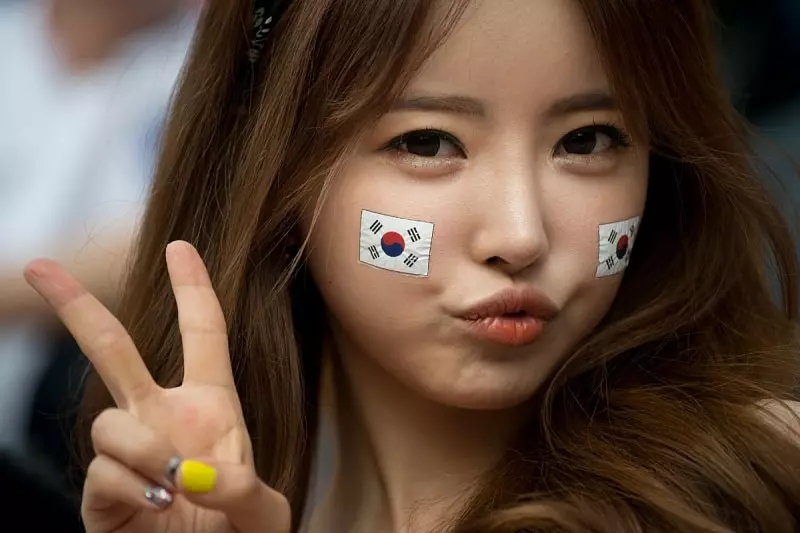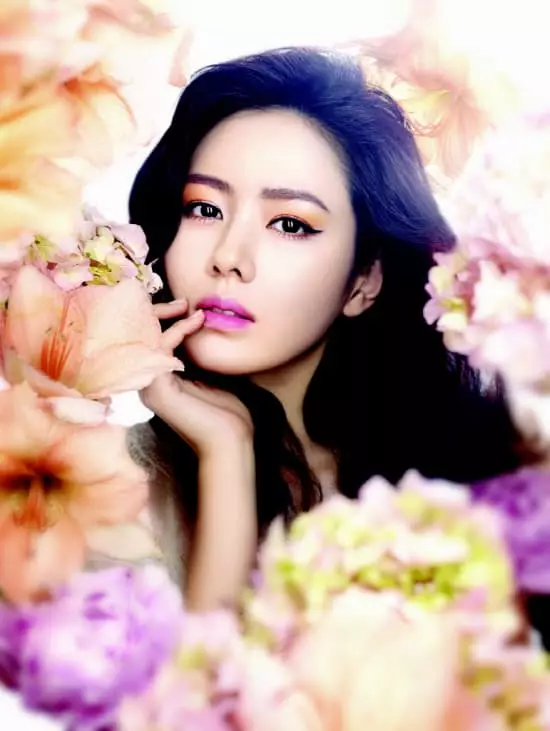One of the first questions that people wishing to explore the culture of Korea concern national names and surnames. Koreans are very different from us according to their national and cultural characteristics, the language, which, of course, is reflected in the names of the residents of this state.
In this article, I propose to deal with the main characteristics of Korean names and surnames, and also consider the Korean women's names and their brief importance.

Distinctive features of Korean names
Find out what awaits you today - a horoscope for today for all zodiac signs
By numerous subscribers requests, we have prepared an accurate horoscope application for a mobile phone. Forecasts will come for your zodiac sign every morning - it is impossible to miss!
Download free: Horoscope for every day 2020 (Available on Android)
As a rule, the names of Korea residents are formed by three components:
- The first part is the surname;
- And the second and third parts are personal names.
Suppose if as a sample to take the name of the political figure of North Korea Kim Jong Yana, then:
- Kim is his surname;
- And Chen and Yun - names.
It is noteworthy that the Koreans have a very small "range" of the names - in total in the state they can consume not more than 250 variations. And about 45 percent of the whole mass takes place the most popular Korean surnames - Lee, Pak and Kim.
But the situation changes dramatically when it comes to the names of their own - they are already many times more. And therefore, the likelihood that you will meet in Korea your master is almost insignificant.
Interesting moment. The Koreans have a custom to give their children names in which certain positive characteristics are defined. People believe that then the positive vibration of the name will connect with the energy of the baby and will help him in life.
In addition to the name and surname, there is such a concept as Pon - the designation of the geographical region in which a certain genus lives. For example, in addition to the surname, Kim additionally use Poni Kimhe, Mijan, Kongju and others.
Koreans must necessarily carefully study their pedigree line. Due to which every local resident can easily track down his ancestors up to 10 centuries.
Interesting moment. If two different people in pure accidents are one surname and one pont - they are considered to be blood relatives, so the marriage union is impossible between them.

Historical information
Korean names of men and women have a close relationship with Chinese culture. Up until the 16th century in this state, in principle, there was no own writing. And in the official documentation, everything was recorded with the help of Chinese hieroglyphs. The latter were selected, pushing out from their meaning and sound.As you know, Korea is divided into actually two states - southern and northern, laws in them are seriously different.
- Residents of North Korea - No longer enjoys Chinese writing, which was banned here. Instead, Hangel is used - that is, the Korean alphabet.
- People living in South Korea, Chinese hieroglyphs continue to use. Approximately 5000 characters are taken to fill out official documents.
As for the surname, they were originally the right to wear exclusively people of noble estate. And versators had to be satisfied with just personal names.
Also, rich and influential people had a much more extensive choice of their own, of which could find the most attractive options for themselves. For example, they could use nicknames or take pseudonyms. The latter were put in front of the surname and pronounced them after handling a person.
Influence of Chinese, Japanese and Mongolian crops
Perhaps the greatest influence on the Korean names of girls and guys was provided by Chinese culture. For example, surnames begin to record Khanch - the Korean version of the name of Chinese written badges.
At the same time, each of the hieroglyphs meant one syllable. Such surnames become national in Korea. You can meet two-sized variations in the names, but they are already much less - a little more than 10.
Interesting moment. Koreans when choosing a name for a newborn son or daughter can be guided only by a special registry consisting of about 5000 names.
But in general, you can choose any name from this list, given our family traditions or personal wishes. When they think about how to call the baby, then they strive to use the colorful associations or focus on those personality features that would dream of seeing in Chad.
Many Korean names in translation denote some material objects (iron, stone), natural elements (fiery), animal names (tiger) and so on.
And from the end of the past century, the versions of Korean double names are becoming fashionable, sort of Isyl, Hanal, Arym and others.
We must not forget about the influence of Mongolian culture on the process of name in Korea (it is about the period when Mongols occupied the Korean peninsula and dominated him).
True, over time, Mongolian trends have lost, but before, more than 100 years in a row, the majority of representatives of the Korean nobility used two forms of names - traditional Korean and Mongolian.
In the first half of the 20th century, Korea is in the power of Japan. Then, in 1939, Dziro Mamina - the Governor General issued a decree, according to which everyone can replace their name by the Japanese version.
It may seem that the innovation was voluntary, but in reality only formally. And in fact, Koreans were forced to be renamed by force. According to the last 6 months, almost 80 percent of people were forced to abandon their original names. Since 1945, when Korea split into two parts, this process becomes reverse.

Communication of names with cultural traditions
Now let's turn to culture. Koreans adhere to the strictest rules of etiquette, using their own names.
- For example, to call a person his name is eligible for his parents and the closest friends if they are his peers. Over the past 20 years, due to the influence of the culture of the West, her husband and his wife are also addressed to each other, however, this trend did not find too much popularity.
- In the appeal to use only the last name - a sign of great ignorance.
- Relatives belonging to one generation have the characteristic identical first part of the names. For example, the brothers entering the ruling dynasty in North Korea Kimov in the names have one syllable. The leader of the Republic of Korean People's Republic - Chen Yun, and his brothers - Chen Hol and Chen.
- As for South Korea, here the described custom acts not only on the closest relatives. There are even cousins and secondary brothers and sisters have the same first part of the names.
- In Korea, in principle, there is no difference between male and female names. The names here are used in various combinations, without tosing to some particular floor. But pay attention to the overall characteristics of the name. For example, the "Hanech" particles (beauty, chastity) are more used to adopt babies, and "Tiger" or "Dragon) are used by boys.
- It is noteworthy that until the beginning of the 20th century, Korean women did not have names. They were denoted only the surname and Pon. And they are necessarily "attributed" to a certain man in the family - the "daughter of that" or "the spouse of that".
When Korean was becoming a mother, then to her, respectively, adding the name of the baby. And the legislative project, which is stuck that any resident of the Republic of Korea is obliged to possess the name and surname, was officially approved only in 1909.
Interesting moment. According to Korean etiquette, there are about 20 consoles to the names and surnames. They are not connected with age or the social status of a person.

Korean women's names and their meaning
And now I suggest you familiarize yourself with the popular Korean women's names and the fact that they indicate.
- Amon - In most cases, this syllable is used to denote small girls.
- Bao is a fairly common root, often found in Korean names. As a rule, it is used for men, although they can also put in women's names. Translated, it means defense.
- Beach is jelly, such a girl is very unusual, real jewel.
- Baths - the name characterizes its owner as gentle and easy.
- Jung - this syllable is very often used in Korean speech. In translation, it means "love." Such a name is ideal for gentle and cute representatives of beautiful sex.
- Dung - the owner of the name will be very bold, not knowing the fear.
- DUK is another option of the popular Korean name. Literally denotes "desire."
- Gin-ho - in translation indicates the "precious lake". The name is designed to focus on the uniqueness and spiritual purity of its owner.
- The yung is the one that flourishes, will live forever.
- Yong - brave.
- EN - this name means "peaceful".
- Yanam - Swallow Rock. Such a name is considered quite unusual and interesting.
- Issue - drops of morning dew. An incredibly milked word, which is often used as a component of the name of its own.
- Kim is a very popular version of the Korean name and at the same time the surname. Accurate translation - "Golden" or "Jewelry". Such a name is designed to emphasize the fact that parents love their daughter very much.
- Kui is an analogue of the previous name.
- Lan is peaceful. The name suits calm and reasonable Koreanians.
- Lin - in translating means "spring" or "spring".
- Lien - accurate translation from Korean - "Lotus flower". It should be noted that the lotus is given a significant role in the culture and myths of Asians, it is considered a rare and excellent plant.
- Mei - Flower Sakura. So be called a gentle girl.
- Mounilla - if you make a literal translation, then this name means "feat in literature." An option is quite unusual and rare name.
- Nung - velvet. Very handsome name, often used by modern Korean.
- NGOs - so in Korea called any gem mineral. The name is very popular.
- NGUTS - night shining. Very often, Koreans enjoy beautiful words as names, exalted natural objects, stars. The moon is the most common object.
- OK is a variant of decorative gems. True, such a name is quite rare.
- Pakpao - paper snakes. The name has light energy.
- Puong - Phoenix, which rebels from the ashes. So called strong representatives of weak gender.
- Sunan - In the literal translation, the name means "good word" or "blessing". It is believed that it will provide its owner with successful fate.
- Juice - in translation means "stone".
- Soo - "Noble Spirit", however, this is not an accurate version of the translation. In reality, this name has a deep spiritual meaning.
- Tien - "Fairy" or "Mystical Spirit". The name will suit the unearthly girls prone to dreaminess, fantasies.
- Tu - Star. Perfect name for a bright and original girl.
- Thai - friendly, which is with ease of friendly connections. The name is perfectly combined with a sociable character, suitable for the pretty Korean ladies.
- TCH - in translation means "poem", "beautiful masterpiece of literature".
- Tuan - "Light". According to statistical data, this name is at the peak of popularity in Korea.
- Thuang is a teller (so called independent and stubborn parks).
- Hoa - Flower. Koreans in principle often use names relating to nature, plants, colors.
- Hong - endowed with great wisdom and beauty.
- Hong - Rose. At the same time it has a beautiful appearance, but is hazard.
- Zyzyn - precious. As usual, this name is given to the beloved children, the appearance of which was waiting for a very long time.
- Chow - Pearl. Another name of the name associated with a beautiful natural element.
- Chi - tree branch. Symbolizes communication with the kingdom of nature.
- Shin - in the name there is such a positive trait of the nature of its owner as the ability to trust.
- Jong is a girl who is very brave, nothing and no one is afraid, has a very stubborn character.
And finally, browse the thematic video. Footage:
